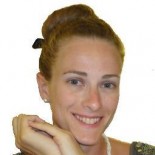"To teach is to learn twice" Joseph Joubert
My teacher's notebook. Some notes on what I read, talk and watch about education.
The disappearance of childhood
Two days ago I started reading The disappearance of childhood by Neil Postman (ISBN 84-226-2695-0; Spanish edition; 1988). I was looking for a reading about childhood and I founded out an amazing book, the result of a deep research on our history and society. This first entrance has some notes I have made in the first chapter:
When There Were No Children
Unlike infancy, childhood is not a biological category, but rather a social concept. (P. 9)
Children exist for less than four centuries. (P. 9)
The difference between adults’ and children’s behaviour, language, attitude and desires – even physical aspect- is minor every day. (P. 16)

A little bit of history
1. Romans:
Romans developed consciousness about childhood (…) it does not come back until Renaissance. (…) They estalished a relation between the growing child and the idea of decency. (P. 21)
Childhood can never exist without a well developed idea of decency. (P. 21)
Quintiliano (…) has a modern idea that define childhood partially, claiming for the need to protect childhood from adults’ secrets, especially from sexual secrets. (P. 21)

2. Early and Late Middle Ages:
Disapear the ability to read and write, the education and the decency. (…) As a consequence, childhood disapears. (P. 22)
- Dissapearance of the ability to read and write.
Our genes are programmed for oral language. The ability to read and write is the result of cultural knowledge. (P. 26)
Being adult in a world that knows how to read and write involves having access to cultural secrets. In this kind of world, children have to become adults. In a world that does not know how to read and write, there is no need to distinguish between child and adult because there are few secrets. (P. 26)
In Middle Ages, childhood ended at age seven (…) when childen were able to speak. (P. 26)
- Dissapearance of education.
Obviously, schools were not unknown inMiddle Ages, some were associated with the Church and others were private. However, there was a lack of basic education, the one that teach how to read and write. (…) Medieval way of learning is the one of orality; it takes place, above all, through apprentice’s and master’s tasks … what is known today as “vocational studies”. (P. 27)
When a medieval child would go to school, ussualy at ten years old, (…) he would meet adults of all ages and he woud not be considered different from them. (P. 27)
- Dissapearance of decency.
In the modern world, we reveal those secrets to children as they move towards adulthood, in the way we consider they can assimilate it psychologically. This idea is only possible in a culture that makes a clear distinction between adult’s world and children’s world, and in which exist institutions that show that difference. In medieval world did not exist neither such distinction nor those institutions. (P. 28)

3. Sixteenth century. The Printing Press:
The Printing Press created a new definition of adulthodd, based on reading competence, and a new concept of childhood, based on reading incompetence. (P. 31)
Coming soon:
Chapter II. The Printing Press and the New Adult

